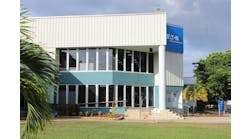The IoT industry is on the brink of crisis, beset by the global semiconductor shortage, developer skills gap, and booming demand for connected devices, according to research commissioned by The Qt Company. The global study, which was undertaken by Forrester on behalf of Qt, shows that the combination of these issues has created a perfect storm, with more than 80% of surveyed manufacturers currently facing challenges in producing digital products and services.
In the wake of the global pandemic, demand for digital products and services grew at an unprecedented rate, and this demand has not waivered. 82% of respondents stated that they need to quickly introduce new smart or connected products and services in order to maintain or grow market position. For nearly eight out of 10 organizations (79%) this means they must accelerate their software R&D lifecycle.
This demand for connected devices is, however, outstripping the supply of developers according to three quarters of organizations (75%). As speed remains paramount for businesses, delays in semiconductor provision (affecting 61% of organizations’ ability to deliver new products) and software development cycles are occurring – and for nearly a third of organizations (31%), these delays are lasting for more than seven months.
“We’re at a crunch point in global technology manufacture and development,” stated Marko Kaasila, SVP of Product Management at the Qt Company. “As a lasting legacy of the events of 2020, we are seeing high levels of demand for products that can come quickly to market while also seamlessly meeting user experience needs. While the semiconductor shortage is predicted to last well into the second half of 2021, organizations can act now to refine their design and development process, the DevDes cycle, and mitigate the impact of the challenges being faced.”
For 82% of businesses, the rise in development of smart devices will necessitate a more efficient development and delivery process. The majority of respondents agreed this will require:
- Higher level software tools and development frameworks are crucial to accelerate new product development (82%)
- Cross-platform software libraries are increasingly important to them (87%)
- Quick software development and collaboration are crucial to meet customer needs quickly (83%)
When asked what the key drivers are for improving digital service/product outcomes the three highest answers were: development of new revenue streams (59%), drive cost reduction and efficiency in production process (59%) and acceleration of broader shift to digital business (52%).
“In a highly competitive technology landscape, there are clear pressures on businesses to deliver quickly and efficiently. These products need to also be designed with a user in mind to ensure smooth adoption,” Kaasila said. “While there is no quick fix to skills and semiconductor shortages, businesses have to look at their ways of working to make fast and effective improvements now to avoid falling into crisis point. Cross-platform frameworks and tools are vital to blunt the effects of these market challenges and digital product decision makers will need to remain flexible and use what can be sourced, when it can be sourced. For example, investing in flexible software tools and platforms that support a wide variety of silicon can reduce the impact of critical supply chain shortages.”
The full study with these findings and others is available here.



